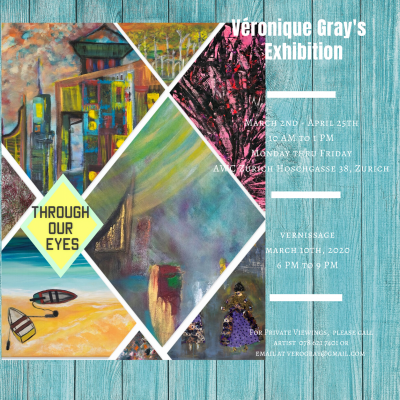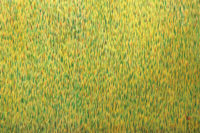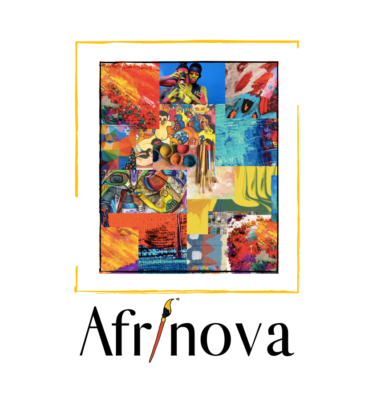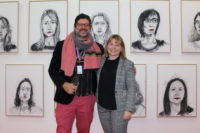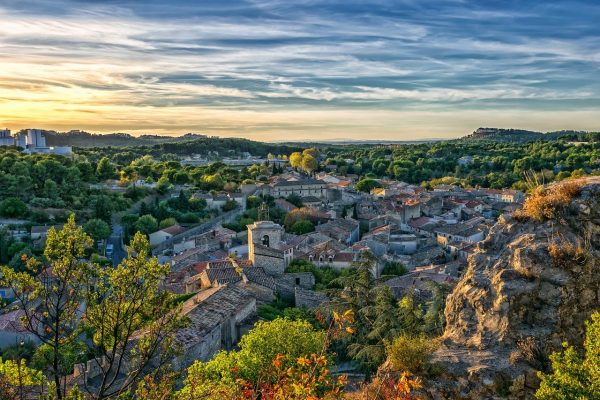Art
Things Fall Apart – Swiss Art from Böcklin to Vallotton
Things fall apart: Does Art reflect a crumbling worldview?
Is there a creative echo when groundbreaking revelations in science shake human self-perception? The present exhibition at the Kunstmuseum in Bern zooms in on this question on a national level, looking at Swiss art from the 19th and early 20th century, with masterpieces by Swiss artists from Ferdinand Hodler to Félix Vallotton, as well as works by female artists like Annie Stebler-Hopf
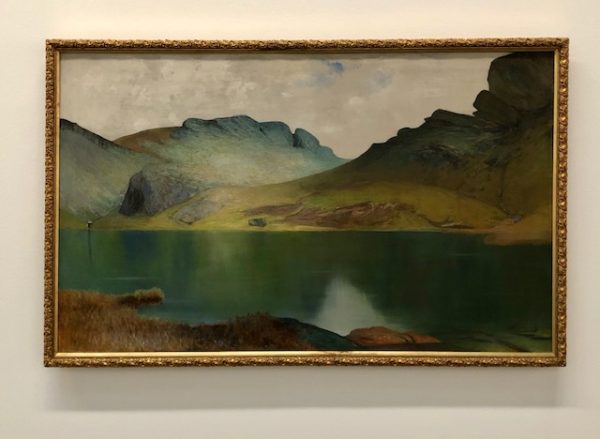
painter Annie Stebler-Hopf – credit photo Uli van Neyghem
So which major scientific realisations have shaken the human ego so fundamentally back then? Following Copernicus’ disappointing discovery that our planet was not the centre of the universe, Charles Darwin humiliated mankind with his evolution theory. As a third blow,
Freud discovered the unconscious….and humans were not even masters of their own minds anymore.
Easy to empathise with the mood of uncertainty and feeling of insignificance that went hand in hand with these bombshells and it did indeed influence the way artists saw and represented the world around them:
In the works of this time, idyllic and romantic landscape paintings make way for a menacing and monumental picture of nature. The human figure (formerly shown as heroic knights or conquerors), now appears only at a distance, almost invisibly small and vulnerable at the foot of gigantic mountains. Gabriel Loppé’s ‘Das Matterhorn’ from 1867 in which two hikers practically disappear in the barren, alpine landscape with sharp-edged icy peaks is a perfect example.
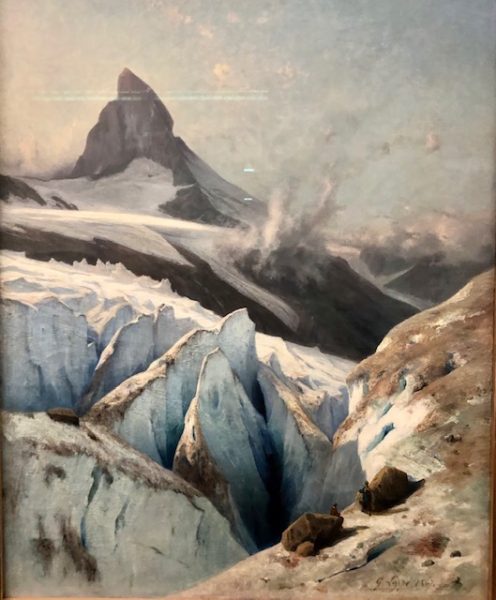
Gabriel Loppé’s ‘Das Matterhorn’ from 1867 – credit photo Uli van Neyghem
Landscape paintings became a vehicle to transport emotions such as fears, concerns and hope. The times, where nature just provided an decorative backdrop to human achievements, glory or pleasurable activities (like picnics) were over.
In paintings of this era in which humans remain the subject (and not just a footnote at the bottom of a page on monumental nature), they appear lost and tired, disoriented, haunted by dreams and fear, resigned or disillusioned. (See paintings by Eduard Boss, Albert Anker). The human figure is no longer represented as triumphant and sovereign, but unprettyfied and with psychological depth.
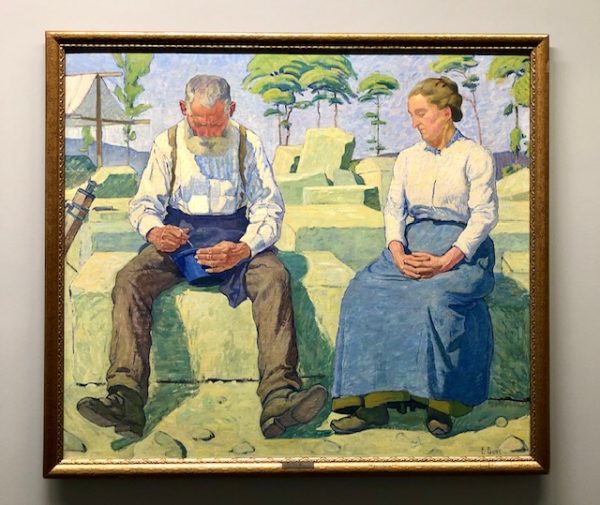
Edouard Boss – credit photo Uli van Neyghem
Freud’s revelations of a deeper, unconscious mental reality and Darwin’s evolution theory also lead to paintings picturing creatures that were half-human, half animal: violent, instinct-driven minotaurs, nymphs and sirens owned by desire, pointing to the uncontrolled aspects of humanity.
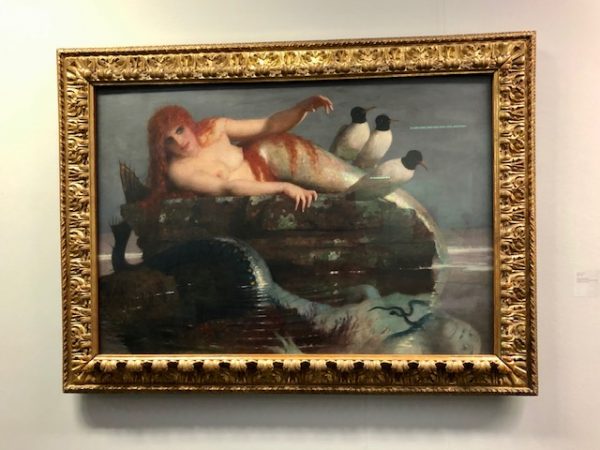
painter Arnold Böcklin, ‘Meeresstille’ – credit photo Uli van Neyghem
Doubtlessly at the heart of the interesting exhibition and symbolically demonstrating the theme of the exhibition, are Ferdinand Hodler’s deconstructed and strikingly modern masterpieces ‘Aufstieg und Absturz’, commemorating the first ascent of the Matterhorn in 1864 (triumph and tragic fall so immediately connected): 4 of the 7 expedition members fall to their death shortly after their achievement.
‘Things fall apart’ is putting Swiss masterpieces into their historical context and illustrates beautifully how art acts as a mirror of society.
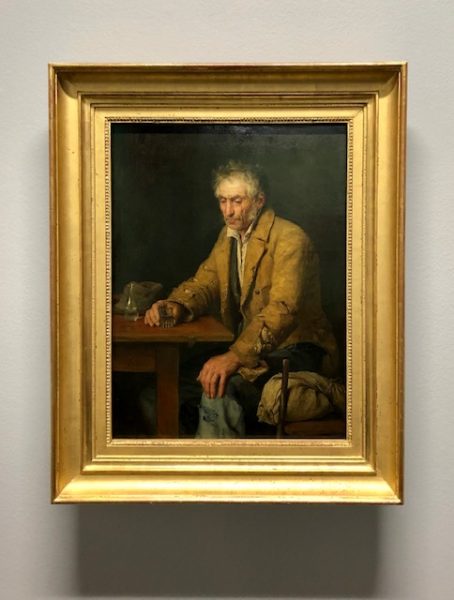
Albert Anker – credit photo Uli van Neyghem
Swiss Art from Böcklin to Vallotton
WHERE: Kunstmuseum Bern
Hodlerstrasse 8-12
3011 Bern
www.kunstmuseumbern.ch
WHEN: until September 20, 2020
OPENING HOURS: Tuesday 10:00 – 21:00
Wednesday – Sunday 10:00 – 17:00
Mondays closed
ENTRY FEES: Adults: CHF 10
Children until 16 years free
reduced tickets for seniors, students etc: CHF 7
About Uli Van Neyghem
Uli Van Neyghem is a German born professional artist and free lance art journalist living in the Geneva region. In her paintings she creates serene atmospheres, using acrylics. Taking her inspiration from living in Switzerland, her contemporary renderings of Swiss cows or mountain animals have become signature collections. She is also co-founder of Collaborative Art™, creative team building and live art entertainment worldwide.
Instagram: @ulivanneyghem
www.ulivanneyghem.com

